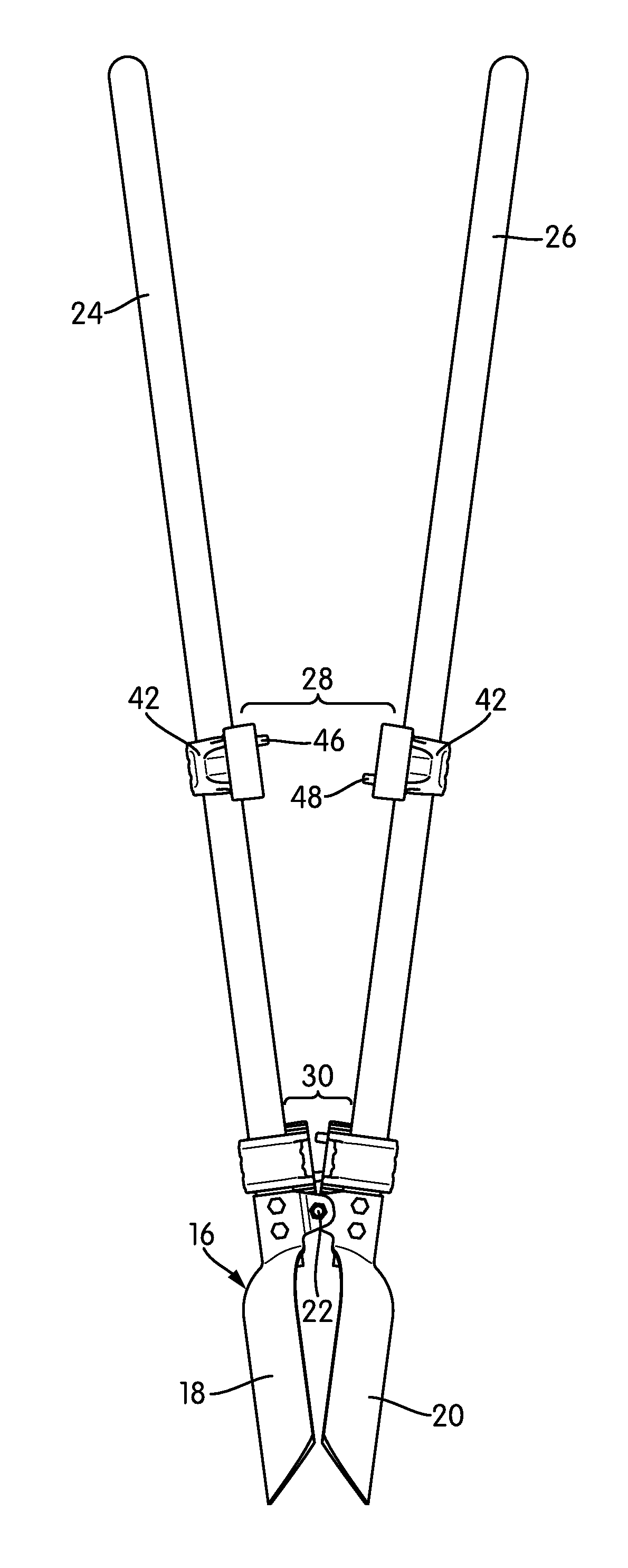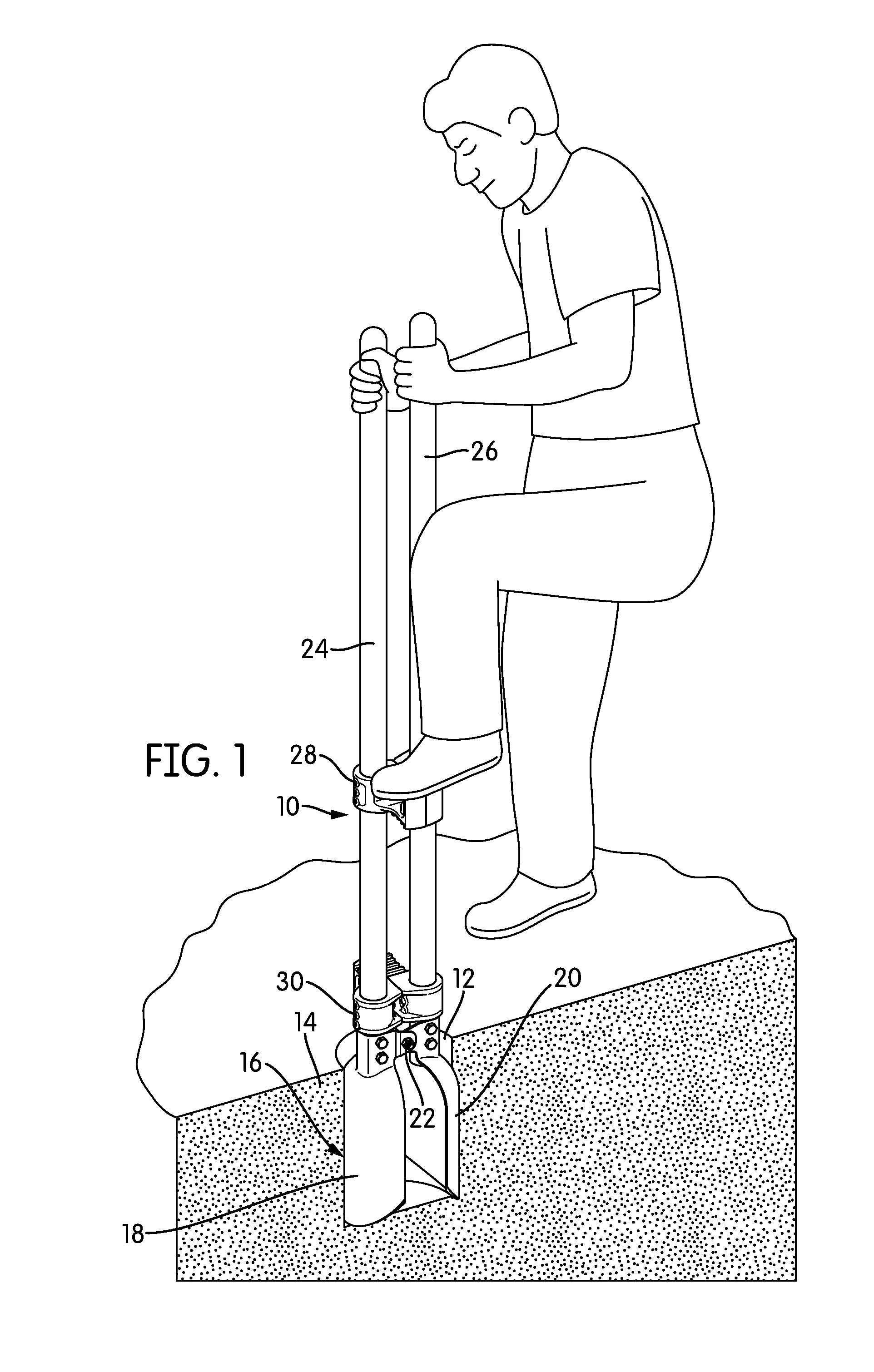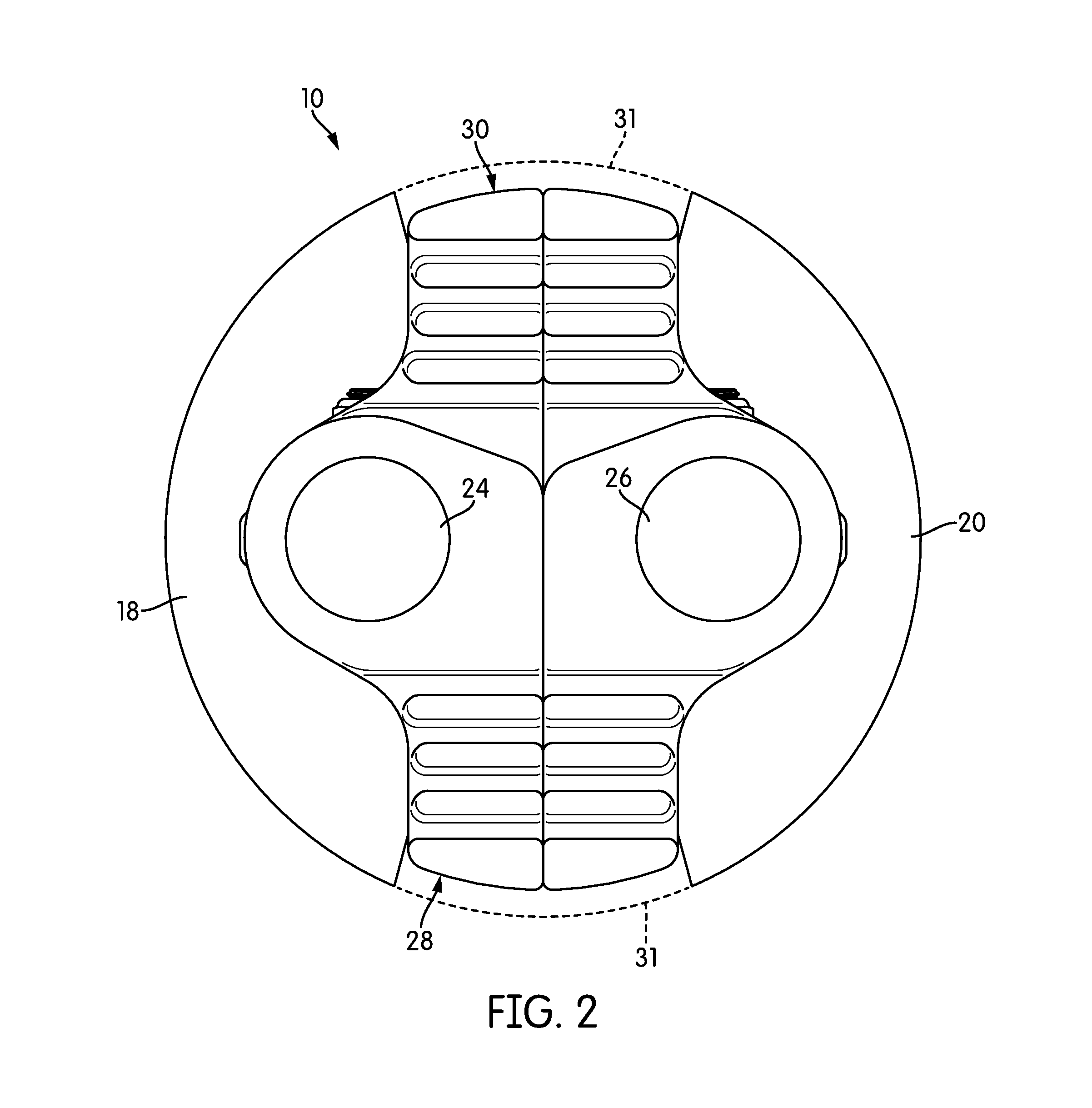Post-hole digger with foot rests
a technology of footrests and digging tools, which is applied in the field of digging tools, can solve the problems of affecting soil fertility, tiring and inefficient use of conventional post-hole digging tools, and affecting soil fertility
- Summary
- Abstract
- Description
- Claims
- Application Information
AI Technical Summary
Benefits of technology
Problems solved by technology
Method used
Image
Examples
Embodiment Construction
[0018]FIG. 1 is a perspective view of a post-hole digging tool, generally indicated at 10, according to one embodiment of the invention. The tool 10 is shown in FIG. 1 in use, digging a hole 12 in soil 14. The tool head 16 comprises two downwardly-extending, rounded digging blades 18, 20 that face one another and are connected together at a hinge 22, which pivots to allow the two digging blades 18, 20 to move closer together and farther apart. Each of the digging blades 18, 20 is connected to an individual shaft 24, 26 that, in the view of FIG. 1, extends vertically.
[0019]The tool 10 has a pair of foot rests 28, 30 spaced from one another along the length of the shafts 24, 26. Each foot rest 28, 30 extends in a different direction. The tool 10 may include any number of foot rests 28, 30 spaced from one another along the length of the shafts 24, 26. In fact, if a particularly deep hole 12 is to be dug, it may be helpful to have three or four foot rests 28, 30 present. The presence of...
PUM
 Login to View More
Login to View More Abstract
Description
Claims
Application Information
 Login to View More
Login to View More - R&D
- Intellectual Property
- Life Sciences
- Materials
- Tech Scout
- Unparalleled Data Quality
- Higher Quality Content
- 60% Fewer Hallucinations
Browse by: Latest US Patents, China's latest patents, Technical Efficacy Thesaurus, Application Domain, Technology Topic, Popular Technical Reports.
© 2025 PatSnap. All rights reserved.Legal|Privacy policy|Modern Slavery Act Transparency Statement|Sitemap|About US| Contact US: help@patsnap.com



